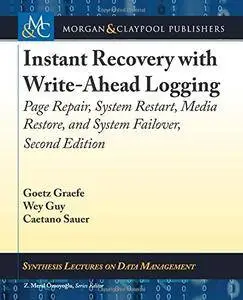Instant Recovery with Write-Ahead Logging: Page Repair, System Restart, Media Restore, and System Failover, Second Edition
Morgan & Claypool | English | 2016 | ISBN-10: 1627058729 | 113 pages | PDF | 6.17 mb
Morgan & Claypool | English | 2016 | ISBN-10: 1627058729 | 113 pages | PDF | 6.17 mb
by Goetz Graefe (Author)
Traditional theory and practice of write-ahead logging and of database recovery focus on three failure classes: transaction failures (typically due to deadlocks) resolved by transaction rollback; system failures (typically power or software faults) resolved by restart with log analysis, "redo," and "undo" phases; and media failures (typically hardware faults) resolved by restore operations that combine multiple types of backups and log replay.
The recent addition of single-page failures and single-page recovery has opened new opportunities far beyond the original aim of immediate, lossless repair of single-page wear-out in novel or traditional storage hardware. In the contexts of system and media failures, efficient single-page recovery enables on-demand incremental "redo" and "undo" as part of system restart or media restore operations. This can give the illusion of practically instantaneous restart and restore: instant restart permits processing new queries and updates seconds after system reboot and instant restore permits resuming queries and updates on empty replacement media as if those were already fully recovered. In the context of node and network failures, instant restart and instant restore combine to enable practically instant failover from a failing database node to one holding merely an out-of-date backup and a log archive, yet without loss of data, updates, or transactional integrity.
In addition to these instant recovery techniques, the discussion introduces self-repairing indexes and much faster offline restore operations, which impose no slowdown in backup operations and hardly any slowdown in log archiving operations. The new restore techniques also render differential and incremental backups obsolete, complete backup commands on a database server practically instantly, and even permit taking full up-to-date backups without imposing any load on the database server.
Compared to the first version of this book, this second edition adds sections on applications of single-page repair, instant restart, single-pass restore, and instant restore. Moreover, it adds sections on instant failover among nodes in a cluster, applications of instant failover, recovery for file systems and data files, and the performance of instant restart and instant restore.



